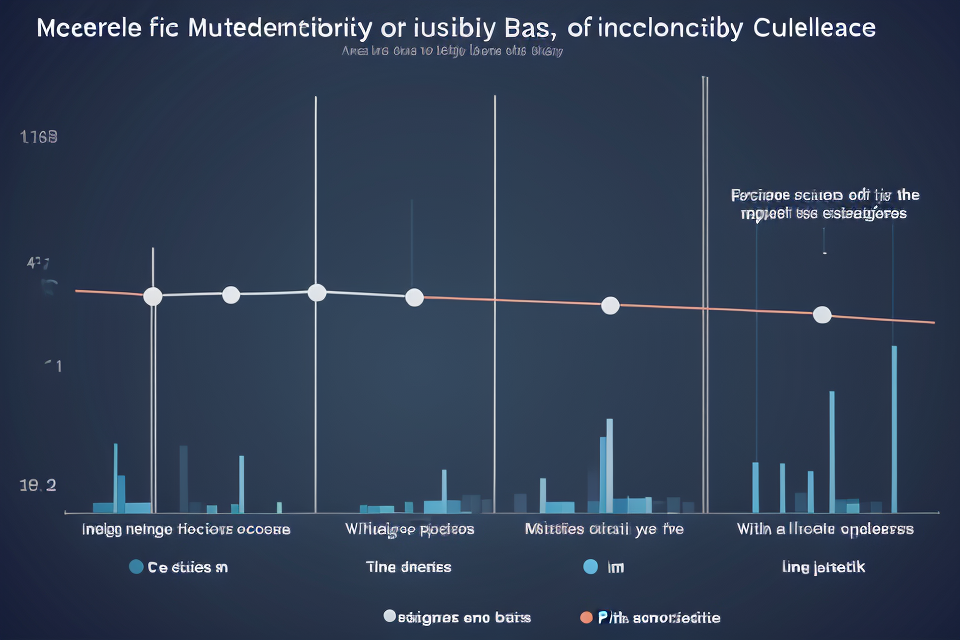
Accuracy is the cornerstone of success in any aspect of life. Whether it’s in our personal or professional lives, accurate information and measurements are crucial for making informed decisions and achieving our goals. However, achieving accuracy is not always easy, and there are many factors that can affect it. In this article, we will explore various ways to improve accuracy in different areas of life, from scientific experiments to everyday tasks. By implementing these techniques, you can enhance your ability to make precise measurements and gather accurate information, leading to better outcomes and greater success.
Understanding Accuracy and Its Importance
What is accuracy and why is it important?
Accuracy refers to the degree of closeness or conformity to a fact or standard. It is the quality of being correct or precise in relation to the intended target or outcome.
In different fields, accuracy is essential for achieving desired results, minimizing errors, and preventing negative consequences. In scientific research, accuracy is crucial for ensuring the validity and reliability of findings. In medicine, accuracy is critical for making accurate diagnoses and prescribing the right treatments. In business, accuracy is necessary for making informed decisions and achieving financial goals.
Inaccuracy can lead to a range of negative consequences, including loss of credibility, legal issues, financial losses, and even physical harm. Therefore, it is important to strive for accuracy in all aspects of life, whether it be in personal or professional contexts.
The role of cognitive biases in inaccuracy
Cognitive biases are mental shortcuts that help our brains process information more efficiently. However, these biases can also lead to inaccuracies in our perceptions, judgments, and decisions.
Types of cognitive biases:
- Anchoring bias: Our tendency to rely too heavily on the first piece of information we receive when making subsequent judgments or decisions.
- Confirmation bias: Our tendency to seek out information that confirms our preexisting beliefs and ignore information that contradicts them.
- In-group bias: Our tendency to favor members of our own group over those from other groups.
- Hindsight bias: Our tendency to believe, after an event has occurred, that we knew it would happen all along.
How cognitive biases affect accuracy:
- Perception bias: Our perception of reality can be influenced by our biases, leading us to misinterpret information.
- Judgment bias: Our judgments can be influenced by our biases, leading us to make poor decisions.
- Memory bias: Our memories can be biased, leading us to recall events differently than they actually occurred.
Strategies to overcome cognitive biases:
- Awareness: Recognizing our biases is the first step to overcoming them.
- Seeking out counterarguments: Considering alternative viewpoints can help counteract confirmation bias.
- Actively seeking out new information: Being open to new information can help counteract anchoring and in-group biases.
- Using objective criteria: Using objective criteria when making decisions can help counteract hindsight bias.
The impact of technology on accuracy
Technology has significantly transformed the way we live and work, and it has also influenced the way we perceive accuracy. The development of algorithms and software programs has made it possible to process large amounts of data quickly and efficiently, which has led to increased accuracy in various fields.
One of the main ways technology has impacted accuracy is through the use of algorithms. Algorithms are sets of instructions that are designed to solve a specific problem or perform a particular task. They are used in everything from search engines to financial modeling, and they can greatly improve the accuracy of results. For example, algorithms can be used to identify patterns in data that may be difficult for humans to detect, which can lead to more accurate predictions and decisions.
However, while technology has greatly improved accuracy in many areas, it is important to be aware of the potential drawbacks of relying on it too heavily. One concern is that algorithms can be biased if they are not properly designed or if they are trained on biased data. This can lead to inaccurate results and perpetuate existing inequalities. Additionally, over-reliance on technology can lead to a lack of critical thinking and problem-solving skills, which can ultimately harm accuracy in the long run.
In conclusion, technology has had a significant impact on accuracy in various aspects of life, but it is important to be aware of its limitations and potential drawbacks. By understanding the role of algorithms and being mindful of bias, we can ensure that technology is used in a way that improves accuracy without perpetuating existing inequalities or stifling critical thinking.
Improving Accuracy in Daily Life
The role of mindfulness in improving accuracy
Mindfulness is a mental state achieved by focusing one’s awareness on the present moment, while calmly acknowledging and accepting one’s feelings, thoughts, and bodily sensations. It is a form of meditation that has been practiced for thousands of years in various cultures and religions. In recent years, mindfulness has gained popularity as a tool for improving accuracy in various aspects of life.
How mindfulness can improve accuracy
Research has shown that mindfulness can improve accuracy by reducing distractions and increasing focus. When we are mindful, we are more aware of our thoughts and emotions, which allows us to better regulate them. This, in turn, can help us to stay focused on the task at hand and avoid becoming easily distracted.
In addition, mindfulness can help us to become more aware of our biases and assumptions, which can lead to more accurate decision-making. By recognizing when we are making assumptions or jumping to conclusions, we can take a step back and gather more information before making a decision.
Techniques for practicing mindfulness
There are many techniques for practicing mindfulness, including meditation, deep breathing, and yoga. Here are a few simple techniques that you can try:
- Mindful breathing: Sit comfortably and focus on your breath. Take slow, deep breaths and try to stay focused on the sensation of the air moving in and out of your body.
- Body scan: Lie down or sit comfortably and focus on each part of your body, starting with your toes and working your way up to the top of your head. Notice any sensations or feelings in each part of your body and try to stay focused on them.
- Mindful walking: Take a slow, relaxed walk and focus on each step. Notice the sensation of your feet touching the ground and the movement of your body as you walk.
By incorporating mindfulness into your daily routine, you can improve your accuracy and make better decisions.
The importance of fact-checking in maintaining accuracy
- The prevalence of misinformation
In today’s fast-paced world, information is readily available at our fingertips. However, not all information is accurate, and the spread of misinformation has become increasingly prevalent. Misinformation can take many forms, from deliberate hoaxes to unintentional errors, and it can have serious consequences.
- The consequences of believing inaccurate information
Believing inaccurate information can have serious consequences, both personally and societally. For individuals, it can lead to confusion, anxiety, and frustration. For society, it can lead to mistrust, division, and even violence. It is therefore crucial to be able to distinguish between accurate and inaccurate information.
- Strategies for fact-checking
So, how can we improve accuracy in our daily lives? One important strategy is fact-checking. Fact-checking involves verifying the accuracy of information before accepting it as true. There are several strategies for fact-checking, including:
+ Checking multiple sources: It is important to check multiple sources before accepting information as true. This can help to identify bias and errors.
+ Verifying the credentials of sources: It is important to verify the credentials of sources, particularly when it comes to medical or scientific information. This can help to ensure that the information is coming from a reputable source.
+ Checking the date of publication: It is important to check the date of publication, particularly when it comes to news articles. This can help to ensure that the information is up-to-date.
+ Using fact-checking websites: There are several fact-checking websites, such as Snopes and FactCheck.org, that can help to verify the accuracy of information. These websites can be particularly useful when it comes to checking the accuracy of viral posts and memes.
In conclusion, fact-checking is a crucial strategy for improving accuracy in our daily lives. By verifying the accuracy of information before accepting it as true, we can avoid the consequences of believing inaccurate information and make more informed decisions.
Developing good study habits to improve accuracy
The Importance of Effective Studying
Effective studying is crucial to achieving academic success and improving accuracy in various aspects of life. By studying effectively, you can retain more information, improve your problem-solving skills, and increase your ability to apply knowledge to real-world situations.
Techniques for Effective Studying
To improve accuracy in your studies, there are several techniques that you can use to enhance your learning experience. These include:
- Active reading: This involves actively engaging with the material by taking notes, highlighting important points, and summarizing key ideas.
- Spaced repetition: This involves reviewing material at increasingly longer intervals to improve retention and recall.
- Flashcards: This involves creating flashcards to help memorize important terms, concepts, and facts.
- Practice problems: This involves working through practice problems to improve problem-solving skills and increase understanding of the material.
Tips for Avoiding Common Study Mistakes
To improve accuracy in your studies, it is important to avoid common study mistakes. These include:
- Skipping class: Attending class is essential to gaining a deeper understanding of the material and staying up-to-date with assignments and deadlines.
- Procrastination: Procrastination can lead to poor time management and reduce the quality of your work.
- Cramming: Cramming can lead to poor retention and decreased ability to recall information.
- Ignoring feedback: Feedback from professors and peers can provide valuable insights into areas that need improvement.
By developing good study habits, you can improve accuracy in various aspects of life, including academics, work, and personal relationships. Effective studying involves active engagement with the material, regular review, and avoiding common study mistakes.
Improving Accuracy in the Workplace
The role of feedback in improving accuracy
Feedback is a crucial element in improving accuracy in the workplace. It is a process of providing information about an individual’s performance, with the aim of enhancing their skills and knowledge. Constructive feedback plays a significant role in improving accuracy as it helps individuals to identify their strengths and weaknesses, and take corrective measures to enhance their performance.
To give and receive feedback effectively, individuals should consider the following points:
- Be specific: When giving feedback, it is important to be specific about what needs improvement and what is being done well. This helps the recipient to understand the feedback and take appropriate action.
- Focus on behavior, not personality: It is essential to separate the person from their behavior when giving feedback. Focusing on the behavior helps individuals to understand the specific actions they need to take to improve their performance.
- Provide suggestions for improvement: Providing suggestions for improvement is crucial in helping individuals to take the necessary steps to enhance their performance. The suggestions should be practical and achievable.
Seeking feedback is also an essential aspect of improving accuracy in the workplace. It allows individuals to gain a better understanding of their performance and identify areas that need improvement. Seeking feedback can be done by asking for feedback from colleagues or supervisors, or by observing the performance of others and seeking feedback from them.
In conclusion, feedback plays a vital role in improving accuracy in the workplace. By providing constructive feedback, giving and receiving feedback effectively, and seeking feedback, individuals can enhance their performance and improve their accuracy.
The impact of communication on accuracy
Clear communication plays a crucial role in reducing errors in the workplace. Misunderstandings and miscommunications can lead to costly mistakes, wasted time, and decreased productivity. Therefore, it is essential to understand the impact of communication on accuracy and implement strategies to improve it.
- The role of clear communication in reducing errors:
- Clarity: Ensure that messages are conveyed in a clear and concise manner, avoiding ambiguity and confusion.
- Context: Provide sufficient context to help the recipient understand the message and its relevance.
- Active listening: Encourage active listening and provide feedback to ensure that messages are understood correctly.
- Strategies for effective communication:
- Choose the right channel: Select the appropriate communication channel based on the urgency, importance, and sensitivity of the message.
- Use simple language: Avoid technical jargon and complex language that may lead to misunderstandings.
- Be open and transparent: Share all relevant information and avoid withholding crucial details that may impact the accuracy of the message.
- Common communication pitfalls to avoid:
- Assumptions: Avoid making assumptions about the recipient’s knowledge or understanding of the message.
- Multitasking: Avoid multitasking while communicating, as it can lead to distractions and misunderstandings.
- Emotional responses: Avoid emotional responses that may cloud judgment and lead to inaccurate communication.
The benefits of cross-training in improving accuracy
- Diversifying skills for better accuracy
Cross-training can help employees diversify their skills, which is essential for improving accuracy in the workplace. By learning new skills and taking on different responsibilities, employees can broaden their knowledge and experience, which can help them make more accurate decisions and perform their jobs more effectively.
- Increasing knowledge and experience
Cross-training can also increase employees’ knowledge and experience, which can help them identify potential problems and make more accurate decisions. By learning about different aspects of the job, employees can develop a more comprehensive understanding of the work, which can help them recognize patterns and make more accurate predictions.
- Encouraging collaboration and communication
Cross-training can also encourage collaboration and communication among employees, which can help improve accuracy. By working together and sharing knowledge and skills, employees can develop a better understanding of the work and the organization, which can help them make more accurate decisions and avoid errors.
- Reducing specialization and promoting versatility
Cross-training can also reduce specialization and promote versatility among employees, which can help improve accuracy. By learning new skills and taking on different responsibilities, employees can become more adaptable and versatile, which can help them handle a wider range of tasks and make more accurate decisions.
- Providing opportunities for professional growth
Finally, cross-training can provide employees with opportunities for professional growth, which can help improve accuracy. By learning new skills and taking on different responsibilities, employees can develop their careers and improve their job performance, which can help them make more accurate decisions and contribute to the success of the organization.
Improving Accuracy in Decision Making
The role of data analysis in improving accuracy
Data analysis plays a crucial role in improving accuracy in decision making. It involves the systematic examination of data or information to draw insights and make informed decisions. Effective data analysis can help individuals and organizations make better decisions by providing a comprehensive understanding of the situation at hand.
One of the key benefits of data analysis is that it allows decision makers to identify patterns and trends that may not be immediately apparent. By analyzing large amounts of data, decision makers can gain a deeper understanding of the factors that influence their decisions and the potential outcomes of different courses of action. This can help them make more informed decisions that are based on evidence rather than intuition.
To effectively analyze data, decision makers must first identify the specific questions they want to answer. This will help them determine what data to collect and how to interpret the results. They should also consider the quality and reliability of the data, as well as any potential biases or limitations.
Once the data has been collected, decision makers can use a variety of tools and techniques to analyze it. This may include statistical analysis, visualization tools, or machine learning algorithms. The specific approach will depend on the nature of the data and the questions being asked.
While data analysis can be a powerful tool for improving accuracy in decision making, it is important to recognize that it is not a panacea. Relying solely on data analysis can lead to tunnel vision and a failure to consider other important factors. Decision makers must also consider their own judgment and experience, as well as the perspectives of others, when making decisions.
The impact of emotions on accuracy in decision making
- Emotions can have a significant impact on decision making accuracy.
- They can influence the way we perceive and evaluate information, leading to biases and errors in judgment.
- For example, when we are feeling anxious or overwhelmed, we may be more likely to make rash or impulsive decisions.
- On the other hand, when we are feeling confident and optimistic, we may be more likely to overlook potential risks or drawbacks.
- It is important to recognize the role that emotions play in decision making and to develop strategies for managing them.
- One approach is to take a step back and assess the situation objectively, using logic and reason to guide our decision making.
- Another approach is to seek out alternative perspectives and to consider the potential long-term consequences of our decisions.
- Additionally, it can be helpful to practice mindfulness and self-reflection, in order to become more aware of our emotions and their impact on our decision making.
- Making decisions based solely on emotions can lead to serious consequences.
- It can result in poor decision making, which can have negative impacts on our personal and professional lives.
- For example, in the workplace, making decisions based on emotions rather than data can lead to missed opportunities, failed projects, and damaged relationships.
- In our personal lives, emotional decision making can lead to regret, resentment, and strained relationships with loved ones.
- Therefore, it is crucial to strive for accuracy in decision making by taking a balanced and thoughtful approach that considers both emotions and rational analysis.
The benefits of collaboration in improving accuracy
Collaboration is an essential aspect of decision making as it helps to improve accuracy and reduce the chances of making errors. Here are some of the benefits of collaboration in improving accuracy:
The importance of seeking multiple perspectives
Collaboration involves seeking multiple perspectives from different individuals. Each person has a unique viewpoint, and their insights can help to identify blind spots that one may have missed. This can lead to a more comprehensive understanding of the situation and can help to make better decisions.
Strategies for effective collaboration
Collaboration requires effective communication and active listening. It is essential to create an environment where everyone feels comfortable sharing their thoughts and opinions. This can be achieved by encouraging open dialogue, asking questions, and providing feedback. Additionally, setting clear goals and objectives can help to keep the team focused and on track.
The potential drawbacks of relying solely on individual decision making
Relying solely on individual decision making can lead to several potential drawbacks. It can lead to tunnel vision, where one may miss important details or overlook critical information. Additionally, it can lead to confirmation bias, where one may only seek out information that confirms their existing beliefs. Collaboration can help to mitigate these potential drawbacks by encouraging diverse perspectives and challenging assumptions.
FAQs
1. How can I improve my accuracy in math?
There are several ways to improve your accuracy in math. First, make sure you understand the concepts and formulas thoroughly. If you don’t understand something, ask your teacher or look up the information online. Second, practice as many problems as you can, especially the types of problems that you tend to make mistakes on. This will help you get a feel for the types of mistakes you make and how to avoid them. Finally, take your time when solving problems. Rushing through problems can lead to careless mistakes, so take your time and double-check your work.
2. How can I improve my accuracy in sports?
To improve your accuracy in sports, you need to practice consistently and focus on your technique. This means paying attention to your form and making adjustments as needed. For example, if you’re a golfer, you might need to work on your grip or stance. If you’re a basketball player, you might need to work on your shooting form. Additionally, it’s important to practice under game-like conditions, so you can get used to performing under pressure. Finally, visualization can be a powerful tool for improving accuracy. Spend time visualizing yourself making successful shots or scoring goals, and you’ll be more likely to perform well in real-life situations.
3. How can I improve my accuracy in language learning?
To improve your accuracy in language learning, you need to practice speaking and listening as much as possible. This means finding opportunities to interact with native speakers, whether it’s through conversation exchanges or language classes. You should also focus on developing your vocabulary and grammar skills, as these are the building blocks of accurate language use. Additionally, it’s important to be aware of common mistakes and actively work to avoid them. Finally, don’t be afraid to make mistakes – they are an important part of the learning process.
4. How can I improve my accuracy in business?
To improve your accuracy in business, you need to pay attention to detail and be thorough in your work. This means taking the time to double-check your work and ensure that you’ve covered all your bases. Additionally, it’s important to communicate clearly and effectively, both in writing and in person. This means being concise and avoiding ambiguity, as well as asking clarifying questions when needed. Finally, it’s important to be accountable for your mistakes and take steps to correct them as soon as possible. This shows that you take your work seriously and are committed to improving.


